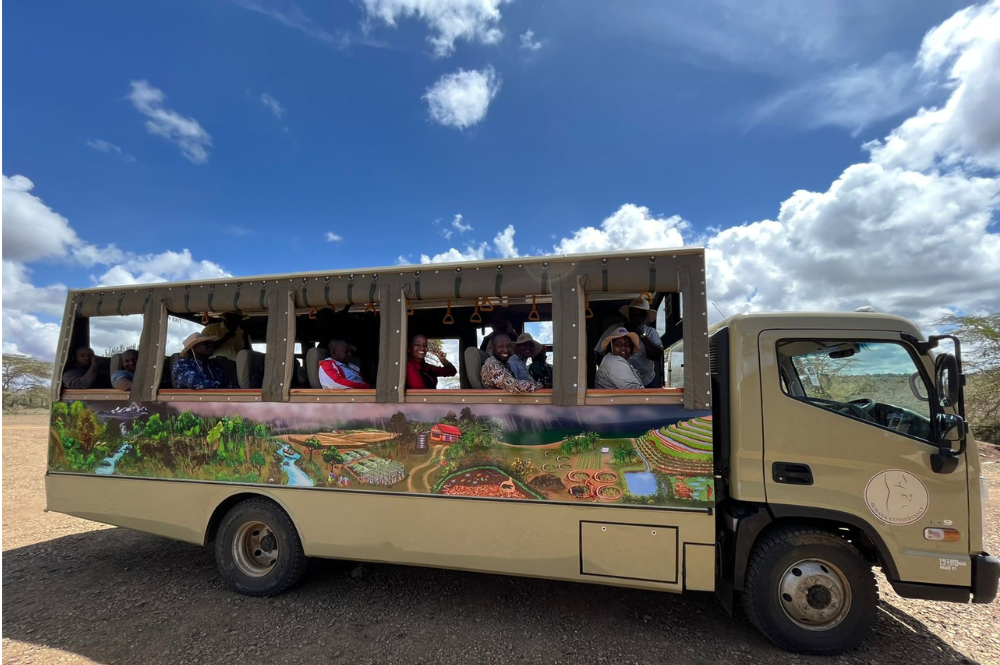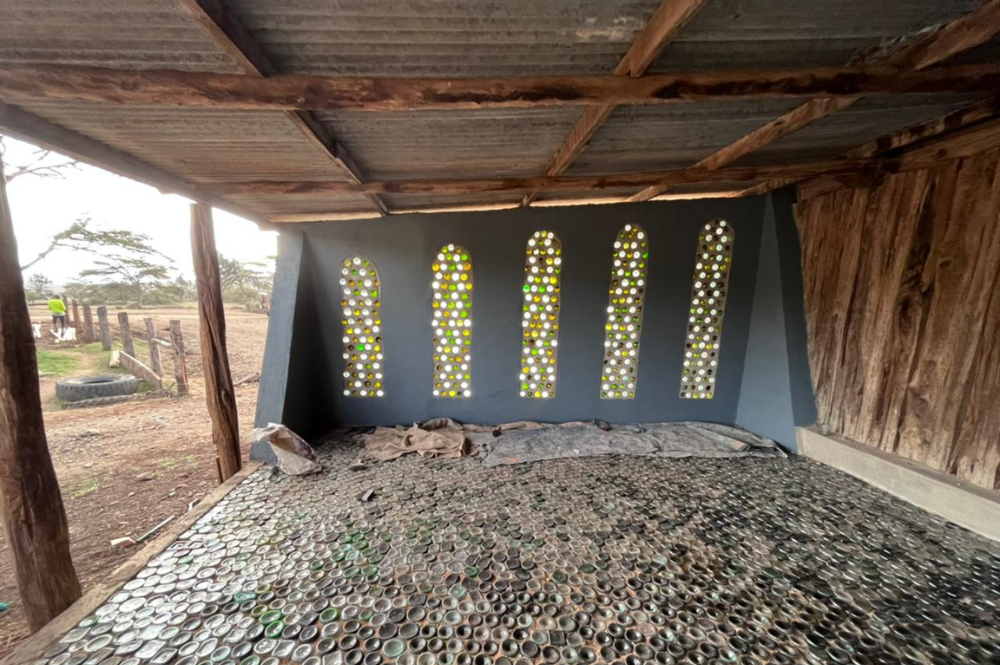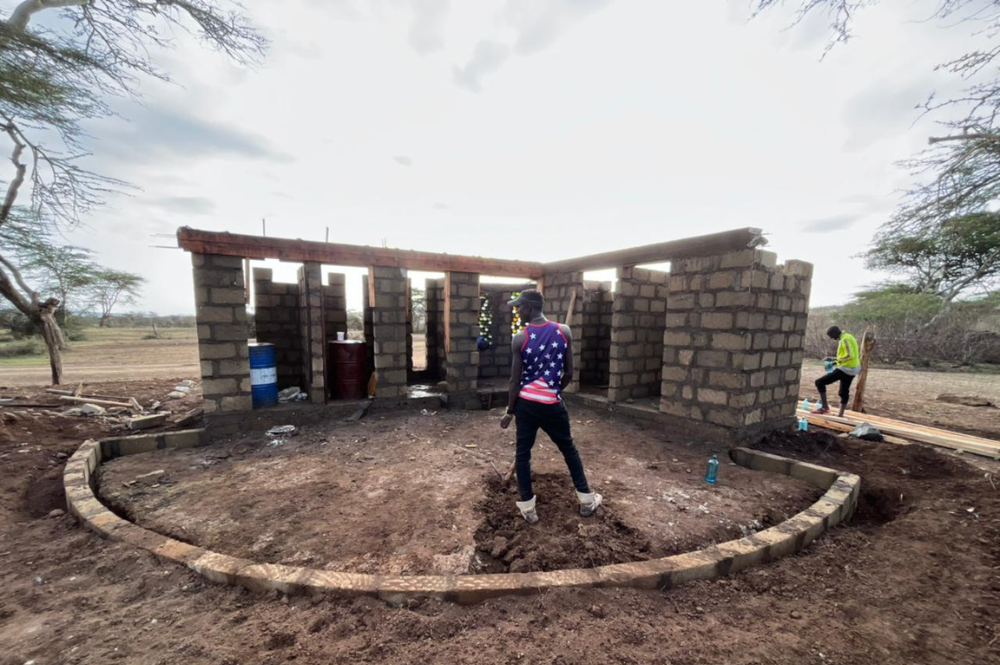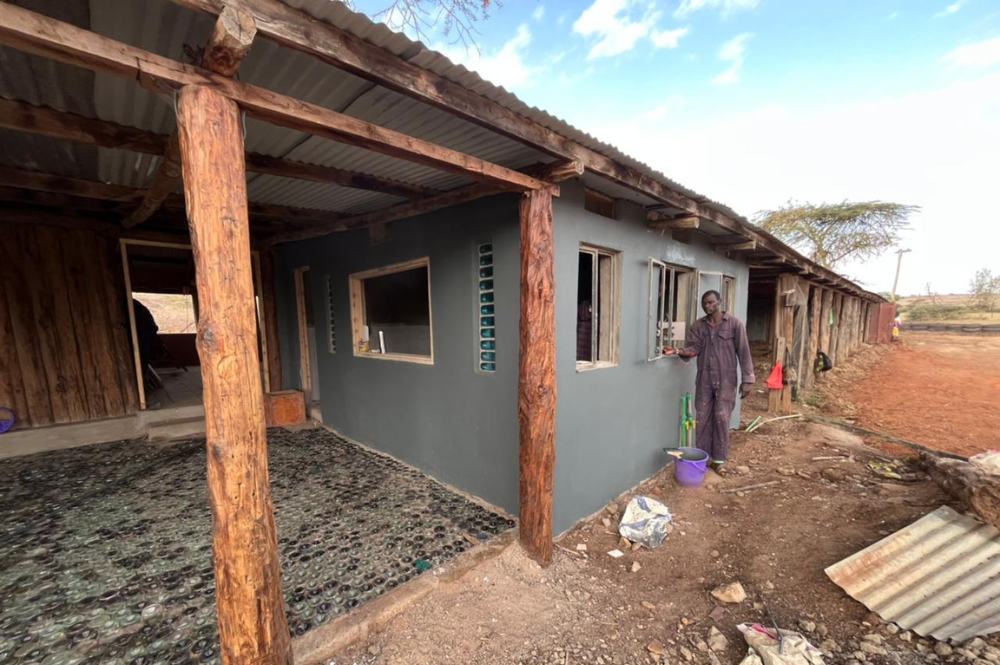This blog is the first of three detailing the progress of Borana’s new ‘Mazingira Yetu’ Conservation Education Centre.
School. It is something that stirs a mix of memories. For me, it was waking up, having breakfast, and heading in with the full intention of skipping that morning’s assembly. Parts of the school routine may have been dull, but, being a country boy from the nature-depleted UK, all I was concerned about was that the daily commute was short and smooth. However, in countries that have retained at least some of their larger wildlife, the journey to school can be more challenging. Thanks, in part, to our far-removed view from the comfort of our sofa or from behind a fence at a zoo, we in Europe often have a romanticised view of African animals – one in which they’re all cute, fluffy, sing catchy songs and could not possibly do us harm. But for people who live alongside them, this is not the reality. A herd of elephants can destroy an entire field of crops in one go, whilst a pair of lions can kill a farmer’s 165-strong flock of sheep in a single night without nibbling at more than a few mutton chops.
Then there is, perhaps, a much more surprising issue, which struck me recently on a visit to a Namibian national park. Chatting with a woman who worked at the petrol station just through the Park’s entrance gate, I asked about her thoughts on the Park’s wildlife and landscape. She replied with an indifferent shrug saying: “I don’t know, I’ve never been able to go further than this”. So close, yet seemingly completely off-limits. Is it possible to value and cherish something that you know little about and are unlikely to access? Unfortunately, in many parts of the world, high-value tourist sites are often priced beyond the reach of average local incomes, and local people are often unable to experience wildlife for interest or pleasure, sometimes seeing them only as a threat to their livelihoods. In Africa, parks frequently offer substantially reduced entrance fees for the country’s citizens, but even subsidised prices can be too much.
Considering these issues, many African protected areas have developed community-based conservation objectives as part of their ethos. Managing interactions between wildlife and local people, and providing tangible benefits derived from the sustainable use of an ecosystem and its wildlife, through activities such as tourism, harvesting or sustainable farming, have both been used.
A longstanding partner of Save the Rhino, Kenya’s Borana Conservancy, is a perfect example. It recognised that involving its neighbours in its long-term efforts to protect the landscape was essential if it was to realise its conservation vision. The need became particularly apparent when Borana received its first 21 black rhinos in 2013. Around the world, local people who become involved in criminality are frequently living in poverty, and seen by players higher up in the trading chain as ‘disposable’. Often, poachers in Africa act out of desperation, exploiting wildlife from which they perceive little or no other benefit. Ensuring that people living around Conservancies received benefits from conservation was key to reducing the chances of poaching.
In fact, Borana has had a wide-ranging set of community outreach projects in place for many years now: everything from the purchase of sanitary pads for local women, to food aid to prevent malnutrition and deficiencies. This has been particularly important in recent months, as Laikipia’s droughts and the war in Ukraine have heavily affected the supply of staple foods. Fortified flour, which provides essential supplementary vitamins and minerals for many people, has risen in price by around 50%. Many have consequently reduced their intake or stopped buying it completely, taking it upon themselves to mill their own flour. Providing food aid has been incredibly well-received by many people living around Borana.
In 2009, the Borana Education Support Programme (BESP) was founded. This endeavour sought to improve people’s lives by improving access to higher education. It provided support and bursaries for children at local schools, as well as salaries for teachers, and fostered a wider appreciation for the surrounding wild landscapes. Whilst this has been largely successful, its reach has been limited to a few schools in the immediate vicinity.
A wider environmental outreach project with a new Conservation Education Centre as its base was therefore needed. One that could involve children and adults from the villages and forests further afield. Using the highly successful “Lolesha Luangwa” conservation education programme based in Zambia’s North Luangwa National Park as a model, the concept of ‘Mazingira Yetu’, or ‘our environment’ in Kiswahili, was born. Its goal is “to broaden, deepen and inspire understanding of conservation and its importance for the health of all those – human, faunal and floral – inhabiting the landscape”. Visitors would spend a day at the Conservancy, taking game drives, spending time at the Centre, meeting Borana’s rangers and other staff, and viewing conservation work in action, such as water storage, solar power, and tree nurseries. It was hoped that these visitors would learn about the wider conservation issues on the Lewa-Borana Landscape, particularly about land degradation, and pass the key messages on to their social circles, empowering the communities to take positive steps to protect the integrity of the ecosystem for years to come.
The first task was finding a location within Borana for the Centre. Too deep inside the Conservancy itself and it would be difficult for visitors to reach it; too close to towns and the project becomes far removed from the subject matter. A 100-year-old woolshed close to Borana’s HQ fitted the bill. Originally constructed for shearing Merino sheep for wool exports to the UK, its rich history, large Olerai trees, and panoramic view of Mount Kenya made this disused building the perfect place to share Mazingira Yetu’s messages.
With environmental stewardship and community engagement set as core values for the programme, it was imperative that these were also rooted in the construction of the facilities themselves. Renovation began in January 2022, with local contractors employed, and recycled materials used as much as possible. It turns out that intact bottles recovered from the Borana Lodge make excellent tiles for the dining area’s floor and windows!
Once construction was in motion, Borana recruited two members of staff from the local area to help develop and implement the Programme: Jedidah Kamoiro and Stephen Gachagua. After much thought and consultation with Conservation Education Specialist Richard Hennery (who had previously worked on the Lolesha Luangwa programme) it was decided that the curriculum would follow Borana’s 4Cs approach: Community, Conservation, Culture and Commerce. This would highlight best practice for sustainable living and accentuate the multi-faceted necessity for conservation. More specific target areas included: the maintenance of tree nurseries, permaculture sessions, water-retention activities, field games, game drives, wildlife-tracking activities, livelihood diversification seminars, human-wildlife conflict mitigation, documentaries and lectures about soil, food webs, adaptations and more!
Stephen Gachagua, the new Conservation Education Officer at ‘Mazingira Yetu’, commented on the layout of the programme:
“The Mazingira Yetu programme is based on a community-centred approach. Thus, its aim is to use conservation education as a platform to foster inclusion and champion for equity, in the end bringing people closer and driving towards sustainability.”
The Centre opened its doors in July 2022, with funding raised by Save the Rhino for the construction of en-suite accommodation for visiting researchers, students and academics, classrooms and a newly revamped safari bus coined the ‘Mazingira Express’. Still in its infancy, the Programme has already completed several school conservation education visits. Overall, more than 350 students and 22 teachers from 10 different schools visited the Centre during 2022.
It is hoped that the wider community’s continued involvement with ‘Mazingira Yetu’ will help to keep Borana’s rhinos safe from poaching. Students have already had the opportunity to learn about rhinos at the Centre and appreciate them in person on the Express. One local Grade 6 pupil, Jane, highlighted:
“Thank you Borana for the programme, I got to see for the first time a rhino and learnt that we have two species of rhinos.”
As ‘Mazingira Yetu’ continues to progress, we very much hope that there will be many more visitors – young and old – from communities all over Laikipia who have an exciting and life-changing experience like Jane.











